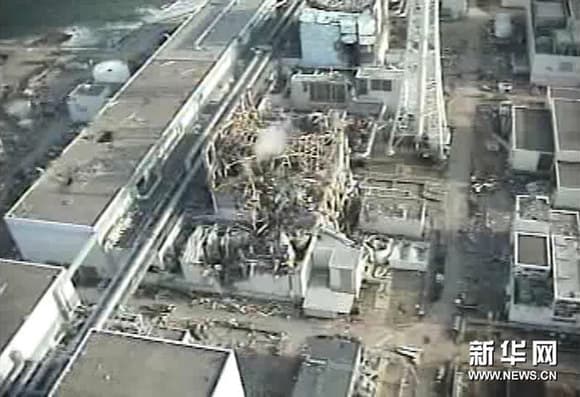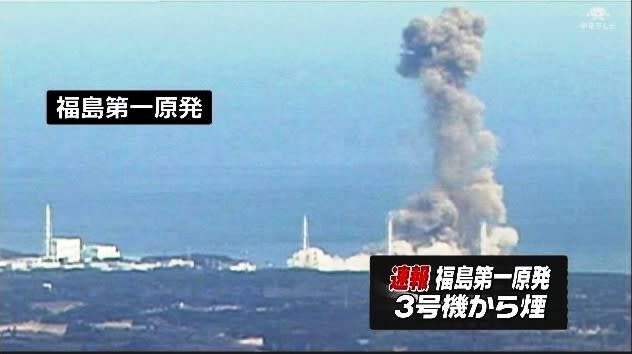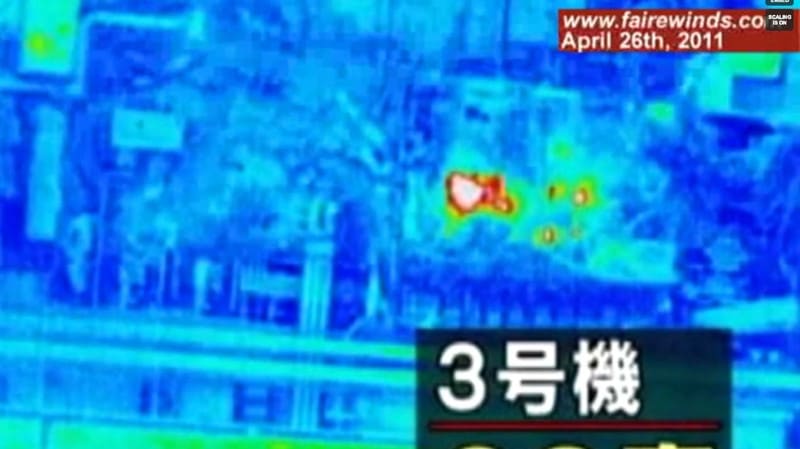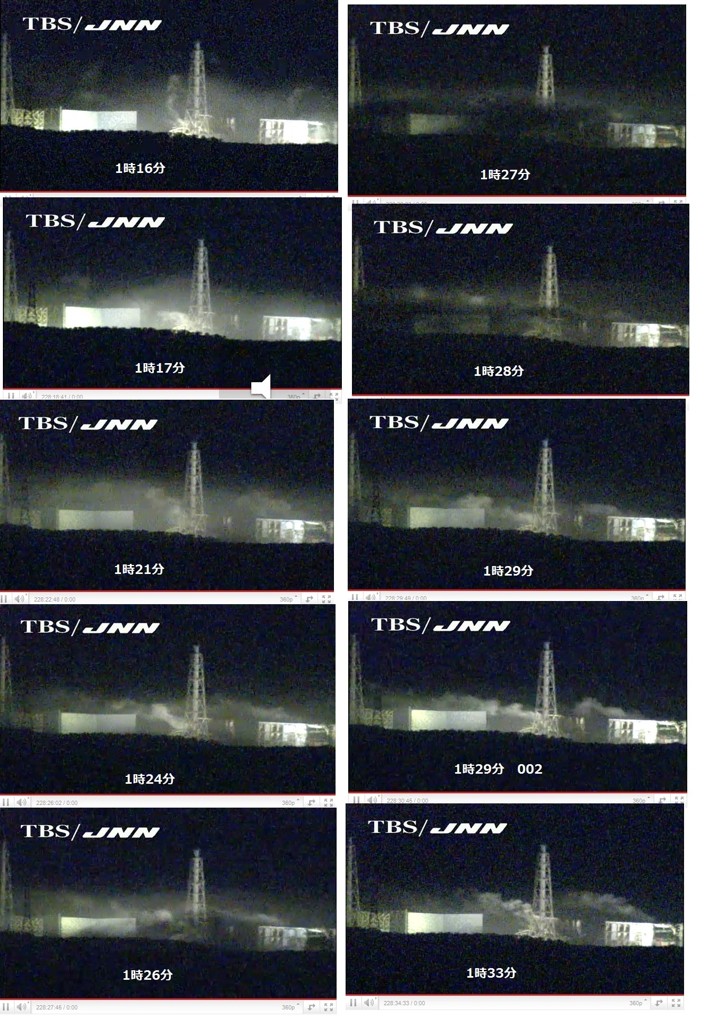推測記事には違いないが、
世界が注目するには理由がある・・・・。
タブーの日本では完全無視!!
しかし、その兆候は至る所にある!!
一説には、あくまでも説にすぎないが、すでに日本は原爆を所持しているという話がある。それも部分解体の形で、分散所持していると言うのである。いざという場合には、短時間で組み立て完成で一気に核保有国に名乗りを上げられる状況にあるというのである。
勿論、これは『推理小説』の域を出ない話である。
しかし、この推測記事は趣が違う。
英文でしか出稿されていないので、当然であるが、世界はかなり注目している。『日本人ジャーナリストが驚くべき推測告白 福島原発で核兵器開発』という、正面から捉えている向きもある。
翻って、日本のネット界では、『トンデモ報道』ものだ。ほとんどの人は無視されているから、知らないだろう。
この動き、天の邪鬼(あまのじゃく)な見方からすると、反って信憑性が増すから不思議である。一体、どんなことが書いてあるのか、T.K.さんが翻訳して頂いた情報があるので、検証して頂きたい。大変忠実に翻訳して頂いている。
下手な意訳で、分かりやすく砕こうかと考えたが、正確を期する意味で要らぬ事はやめにした。
要するに、推測ではあるが、
福島原発では、核兵器の核が製造されていたするのである。それが全ての情報の混乱の原因だ書かれている。そして、それは米国の承認の元で行われていたするのである。
動きを見れば、頷ける部分も多い。はたして実態はどうなのか?
承認を前提にはしているが、その裏があるというのがもう一つの見方である。陰謀は裏の裏を考える必要がある。まことにややこしいが、承認を得ながら、製造されていたが、その裏では密かに独自開発を企んでいると筋書きである。
こうなると、それを潰す動きと隠す動きがややこしく交錯する。プルサーマルとはその交錯した隠謀の手段であった。そう読み取ることも出来よう。
元来、原子力発電は、核兵器開発の副産物である。それを原子力の平和利用などと呼んではいるが、カモフラージュである。核兵器開発の副産物であるからには、基本的に平和利用等と言うことはあり得ない。
原子力発電はプルトニウム生産であるからだ。プルトニウムは原爆の原料である。その過程で原子力発電がたまたま登場したのだ。ましてやプルサーマルはそのプルトニウムを原料としている。さらにプルトニウムが生産されるのである。
終局おいて、爆弾を作るしかないではないか。と言うより、その原料が生産され続けている事を意味する。当然、その濃縮を考える輩は必然的に出る。
先に、東海原発では、ウランの濃縮過程で臨界事故があったではないか。
ソースが提示されていないことから、推測記事の域を出ないが、普通に、素直に考えれば、あり得ない話ではない。
原子力発電は、決して平和利用ではあり得ない。爆弾を作るシステムであることには変わりがない。爆弾を作るシステム上に乗っかかった蒸気タービン発電に過ぎない。
福島第1原発3号機、昨夜の爆発黒煙映像を最後に、TBSライブ映像が利用停止となる。http://quasimoto.exblog.jp/14745357/
そう考えると、推測記事かも知れないが、核心を突いている。少し、難解だがお読み頂きたい。
私見であるが、狭い国土の日本。原子力発電も原爆製造、則ち、核兵器保有の戦略的価値は一つもない。と考えている。
翻訳文:T.K氏の訳による。
【翻訳開始】福島原発事故の真相隠蔽と処理遅延の本当の理由 = 原発内で極秘に原爆製造が行われていたからでは?(島津洋一・英文記事)
福島第一原発からの混乱し、しばしば矛盾するレポートは、たんに津波で引き起こされた結果の不手際ないし誤報によるだけではない。
東電と経済産業省の不可解な引き伸ばしした、いい加減な説明は、何らかの説明できない要因によっているように見える。
福島第一の煙とそれを映し出す鏡とは、福島原発の確固たる目的と強固な意図そして、部外者の知らない恐ろしい任務をあいまいにしているように見える。
最も論理的な説明: 核産業と政府機関は、日本の民生用原子力発電所の中に隠された原子爆弾研究設備が発見されるのを妨げるために(あえて)混乱させている。
人目につかない核兵器(製造)プログラムは第一原発の中の妖怪であり、情報管理システムが消えるか崩壊したときには、すぐに見破ることができる。
それには公式説明と予期せぬ出来事との間のギャップを綿密に調査しなければならない。
矛盾した報告
TEPCO(日本の原子力オペレータ)は、初めは、3基の原子炉が3月11日の東北地震と津波が生じた時点で稼働していたと報告した。そして、プルトニウム―ウラン混合酸化物(または、MOX)で稼働していたUnit3で水素爆発は起きた。高い致死性のプルトニウム粒子が3号炉から湧き上った。プルトニウムはより小さな、より容易に射出される弾頭材料である。
伝えられるところによると、乾いた冷却水槽の中で使用済みウラン燃料棒の過熱し、4号炉の破損した建屋の中で発火した。しかし、火災の規模はこの原子炉が発電以外の何らかの目的で稼働していたことを示している。
4号機がこの発電操作のリストから削除されていたことは、4号機が武器を製造できるグレードの核分裂性物質を抽出する過程の第一歩であるウラン濃縮に使われていたのではないかという疑問を起こさせる。
太平洋を横切って照らされた海水の花は、謎のもう一つの断片を含んでいる。なぜなら(花の)地下の源?は追跡できないからである(あるいは、おそらく口にするのもはばかれる)。湛水された迷路のようなパイプ群(ここに行方不明になっていた二人の原発労働者が発見された・・これまでマスコミに公開されていなかった)は、ミステリーへの答えを含んでいる可能性が高い。あえて誰も命名しない実験室のことである。
政治的闘争
管首相の問題点を迅速に報告せよとの要求に反応して、核ロビーは、首相のオフィスへの重要な情報を、柵を高くし、凍結させることにした。
核支持者同盟には TEPCO、プラント設計者であるGE、経産省、かつての与党である自民党、そして、もちろん、ホワイトハウスが含まれる。
報道と有事担当の大臣たちは最近、海江田万里経産省大臣に対して、原子力安全委員会をさしおいて、核の推進と調整の両者を行っていると非難した。
TEPCOは、管首相のヘリが揮発性ガスの放出(ベント)を遅らせ、その結果2号炉を爆発させることになったと非難することで、(これに)すばやく逆襲した。
健康上の理由で、東電社長は病院に逃げ、管首相と東電とのコミュニケーションを断ち切り、福島第一への管の査察を邪魔した。
管は、民主党内のライバルである小沢一郎(唯一の潜在的な同盟者であるが)の強力な反目によって妨げられ、手ごわい核支持連合に挑戦することを促進させられている。
ほとんど一人勝ちの54年間、原子力を支援してきた自由民主党党首は、ちょうど米国大使・ジョン・ロスと内密の話をしたばかりだが、その一方、バラク・オバマは、米国の新しい原子力発電所を支持する声明を出していた。
コミュニケーションの切断
東京とワシントン間の内密の会談の要旨は、私の同僚の日本人ジャーナリストへの私の最近の電話の呼び出しに対する中断から推量することができる。
放射性のホットゾーンの中で、彼のローミング番号が外され、福島第一の原子力作業従事者の携帯も同様に外部と電話アクセスが拒否された。
サービスの停止は設計上の欠陥ではない。
1996年に東北危機対応計画を用意するのを助けたとき、移動基地局が素早い再充電でバックアップを確保することに私は努力した。
私の同僚が東京に戻ったとき、私がGEに関して言及したとき、その後の通話が不通になった。
この件は、GEのCEOのジェフ・イメルトが福島第一原発を再建するという約束で東京に着陸した日に起きた。
このような明確な盗聴は、国策電話会社NTTが米国国家安全保障局(NSA)の信号妨害プログラムに協力している場合のみ可能である。
満州取引
この巨大なでっち上げの背後にある一連の出来事は、数十年をさかのぼって考える(必要がある)。
1930年代、中国北東部を日本軍国主義者が占領していた間、満州国の傀儡国は、人口過剰の日本とその軍事機構を支えるために、完全に近代的な経済原動力として開発された。
岸信介という高位の経済計画者は、そのとき関東軍の責任者であった東条英機と緊密に働いた。
軍人と植民地経済計画者との間の緊密な結びつきは、驚くほどの技術的実績を導き出した。たとえば、超特急(いわゆる新幹線)のプロトタイプや北朝鮮における日本の原爆計画の端緒などである。
東条が首相になったとき、岸は経済産業省の大臣として仕え、世界規模の総力戦の計画を立案した。
1945年、日本が敗北したあと東条と岸はともにA級戦犯として有罪になった。しかし、岸は理由は不明だが絞首台を逃れた。たぶん、戦争で荒廃した国への有用性で。
痩せこけたエコノミスト(岸)の中央管理的な経済構想は、通産省のちの経産省に青写真を提供した。
この青写真は戦後の日本を経済超大国に変えた経済の奇跡を生み出した。
岸は、冷戦推進者のダレス(アイゼンハワーの秘書であった)の好意に会い、岸は1957年に首相に選ばれた。
岸の子分である中曽根康弘(元海軍士官で後の首相)は原子力基本法に隠れて核兵器保有国になるキャンペーンの先頭に立った。
アメリカの共犯
岸は、密かにホワイトハウスと取引を行い、米軍が沖縄と東京郊外の厚木海軍航空基地に原子爆弾を格納することを許可した。
(海軍伍長リー・ハーヴェイ・オズワルド(JFKの暗殺者?)は厚木基地の地下弾薬庫の護衛であった。)
交換条件に、アメリカは、日本が「文民(Civilian)」核開発計画を進めることに同意した。
ヒロシマ・ナガサキへの原爆投下の後の日本の圧倒的な反核感情により、極秘の外交が必要であった。
2年前、密約の1つのテキストは、第一代・民主党首相・鳩山由紀夫(2009-10の9か月)の外務大臣・岡田克也によって、掘り起こされた。
この文書から多くの主要な詳細部分が無くなっていた。これらは外務省の記録文書のなかで(公開を)ブロックされていた。
退職したベテラン外交官・東郷和彦は、より機密性の高いものが補足文書に含まれていたことを明らかにした。
そのいくつかは岸の異母兄弟である故佐藤栄作(首相1964-1972)の住んでいたマンションに保存されていた。
これらの最も重要な外交ノートは除かれ、その後消えたと東郷氏は付け加えた。
これらの暴露は、日本の主要な問題であると考えられるが、西側メディアによって無視されている。
福島原発がダメになるとともに、世界はそのジャーナリストの無視に代価を払っている。
岸は1959年のイギリス訪問で、軍のヘリコプターでエセックスにあるブラッドウエル原子力発電所へ飛んだ。
翌年、大規模な平和デモにもかかわらず、日米安保条約が調印された。
2,3年以内に、イギリスの堅いGECは茨城県東海村に日本で最初の原子炉を建てた。
同時に、1964年の東京オリンピックの直後、富士山を通り越す、新たに公開された新幹線は原子力発電への完全な理論的根拠を提供した。
岸は、戦力を持つことを禁じている憲法9条のもとでも、「核兵器は明確に禁止されていない」という有名な声明を発している。
彼の言葉は、2年前に、彼の孫である当時の安倍晋三首相によって繰り返された。
進行中の北朝鮮“危機”は、この政治的エリート集団の三代目の子孫が日本の核武装の考えを広める口実として利用された。
多くの日本人ジャーナリストと諜報活動の専門家は、秘密のプログラムが(核)弾頭の素早い組立のために十分進み、臨界に近いレベルの地下実験が、小さなプルトニウム・ペレットで行われていることは、当然のことと考えている。
代替エネルギーの妨害
核ロビーの利己的な対応は遠く未来にまで広がっている。日本列島の唯一の実行可能な代替エネルギーの源泉-風力-を握り潰したのである。
何十年の研究にもかかわらず、日本には中国(経済的には同規模の)の5%しかない。
核エネルギーのウエスティングハウスのパートナーの三菱重工は、風力タービンを製造しているが、もっぱら輸出用である。
シベリア高気圧帯は北日本に強い安定した風の流れを保障している。
しかし、この地域の公益事業会社はこの自然エネルギー資源を生かしていない。
この理由は東京に基盤がありもっとも大きいエネルギー市場を支配しているTEPCOが9つの電力会社と国の送電網の将軍として大きくふるまっているからである。
その大きな資金は、高級官僚、出版社や東京都知事石原慎太郎のような政治家に影響を及ぼす一方で、核の野望はその側に防衛産業や司令官たちを従わせる。
しかし、TEPCOはトップ犬ではない。
この巨大企業の首席経営者は、岸の発明品である経産省である。
沖に向かう風の国の実験サイトは、残念ながら風にさらされる北海道と新潟だけで、より南東の千葉には置かれていない。
風力エネルギーの運命を決めるテストの結果は2015年まで公表されないであろう。
この遅い動きの実験のスポンサーはTEPCOである。
戦争抑止の死
一方、IAEAは核爆弾への日本の高揚した流れに対し警告をせず、即座には何もしなかった。
ホワイトハウスはアメリカの空を通る放射線の流れを見過ごすか、同盟国による核拡散の露骨な2重基準のリスクの暴露かをしなければならない。
一方で、ワシントンは、日本の原子爆弾(開発)への沈黙の同意は、真珠湾かヒロシマの記憶を全く受け入れない。
多くの日本人が憲法9条の改定に賛成するというようなことが起こりそうにないなかで、核抑止の可能性は、それ自体、反対すべきものでも、違法でもない。
公認された所有は、安全検査、厳重な管理および透明性を要求したであろう。そして、福島の緊急の対応を急がせたかもしれない。
いま起きているような緊急時において、秘密主義はすべての出費を出さねばならない。たとえそれが、無数の被爆者や核被害者を意味するとしても。
地域的抑止システムと大国へ回帰することを可能にすることの代わりに、満州取引は、世界中に放射能を吐き出す時限爆弾を設置した。
人類へのこの核脅威の中心にあるニヒリズムは福島第一の中にあるのではない。
それは、国家安全の考え方の中にある。
(核による)自滅の幻影は、日米安全保障条約の廃棄によってだけ終わらせることができる。
炉心溶融に対する原子力作業従事者の戦いを致命的に遅らせた秘密主義の根本原因がそこにある。
参照:http://www.asyura2.com/11/genpatu9/msg/161.html【翻訳終了】
by Yoichi Shimatsu
Confused and often conflicting reports out of Fukushima 1 nuclear plant cannot be solely the result of tsunami-caused breakdowns, bungling or miscommunication. Inexplicable delays and half-baked explanations from Tokyo Electric Power Company (TEPCO) and the Ministry of Economy, Trade and Industry (METI) seem to be driven by some unspoken factor.
The smoke and mirrors at Fukushima 1 seem to obscure a steady purpose, an iron will and a grim task unknown to outsiders. The most logical explanation: The nuclear industry and government agencies are scrambling to prevent the discovery of atomic-bomb research facilities hidden inside Japan's civilian nuclear power plants.
A secret nuclear weapons program is a ghost in the machine, detectable only when the system of information control momentarily lapses or breaks down. A close look must be taken at the gap between the official account and unexpected events.
Conflicting Reports
TEPCO, Japan’s nuclear power operator, initially reported three reactors were operating at the time of the March 11 Tohoku earthquake and tsunami. Then a hydrogen explosion ripped Unit 3, run on plutonium-uranium mixed oxide (or MOX). Unit 6 immediately disappeared from the list of operational reactors, as highly lethal particles of plutonium billowed out of Unit 3. Plutonium is the stuff of smaller, more easily delivered warheads.
A fire ignited inside the damaged housing of the Unit 4 reactor, reportedly due to overheating of spent uranium fuel rods in a dry cooling pool. But the size of the fire indicates that this reactor was running hot for some purpose other than electricity generation. Its omission from the list of electricity-generating operations raises the question of whether Unit 4 was being used to enrich uranium, the first step of the process leading to extraction of weapons-grade fissionable material.
The bloom of irradiated seawater across the Pacific comprises another piece of the puzzle, because its underground source is untraceable (or, perhaps, unmentionable). The flooded labyrinth of pipes, where the bodies of two missing nuclear workers?never before disclosed to the press? were found, could well contain the answer to the mystery: a lab that none dare name.
Political Warfare
In reaction to Prime Minister Naoto Kan's demand for prompt reporting of problems, the pro-nuclear lobby has closed ranks, fencing off and freezing out the prime minister's office from vital information. A grand alliance of nuclear proponents now includes TEPCO, plant designer General Electric, METI, the former ruling Liberal Democratic Party and, by all signs, the White House.
Cabinet ministers in charge of communication and national emergencies recently lambasted METI head Banri Kaeda for acting as both nuclear promoter and regulator in charge of the now-muzzled Nuclear and Industrial Safety Commission. TEPCO struck back quickly, blaming the prime minister's helicopter fly-over for delaying venting of volatile gases and thereby causing a blast at Reactor 2. For "health reasons,” TEPCO 's president retreated to a hospital ward, cutting Kan's line of communication with the company and undermining his site visit to Fukushima 1.
Kan is furthered hampered by his feud with Democratic Party rival Ichiro Ozawa, the only potential ally with the clout to challenge the formidable pro-nuclear coalition
The head of the Liberal Democrats, which sponsored nuclear power under its nearly 54-year tenure, has just held confidential talks with U.S. Ambassador John Roos, while President Barack Obama was making statements in support of new nuclear plants across the U.S.
Cut Off From Communications
The substance of undisclosed talks between Tokyo and Washington can be surmised from disruptions to my recent phone calls to a Japanese journalist colleague. While inside the radioactive hot zone, his roaming number was disconnected, along with the mobiles of nuclear workers at Fukushima 1 who are denied phone access to the outside world. The service suspension is not due to design flaws. When helping to prepare the Tohoku crisis response plan in 1996, my effort was directed at ensuring that mobile base stations have back-up power with fast recharge.
A subsequent phone call when my colleague returned to Tokyo went dead when I mentioned "GE.” That incident occurred on the day that GE’s CEO Jeff Immelt landed in Tokyo with a pledge to rebuild the Fukushima 1 nuclear plant. Such apparent eavesdropping is only possible if national phone carrier NTT is cooperating with the signals-intercepts program of the U.S. National Security Agency (NSA).
The Manchurian Deal
The chain of events behind this vast fabrication goes back many decades.
During the Japanese militarist occupation of northeast China in the 1930s, the puppet state of Manchukuo was carved out as a fully modern economic powerhouse to support overpopulated Japan and its military machine. A high-ranking economic planner named Nobusuke Kishi worked closely with then commander of the occupying Kanto division, known to the Chinese as the Kwantung Army, General Hideki Tojo.
Close ties between the military and colonial economists led to stunning technological achievements, including the prototype of a bullet train (or Shinkansen) and inception of Japan's atomic bomb project in northern Korea. When Tojo became Japan's wartime prime minister, Kishi served as his minister of commerce and economy, planning for total war on a global scale.
After Japan's defeat in 1945, both Tojo and Kishi were found guilty as Class-A war criminals, but Kishi evaded the gallows for reasons unknown?probably his usefulness to a war-ravaged nation. The scrawny economist’s conception of a centrally managed economy provided the blueprint for MITI (Ministry of International Trade and Industry), the predecessor of METI, which created the economic miracle that transformed postwar Japan into an economic superpower.
After clawing his way into the good graces of Cold Warrior John Foster Dulles, Eisenhower's secretary of state, Kishi was elected prime minister in 1957. His protégé Yasuhiro Nakasone, the former naval officer and future prime minister, spearheaded Japan's campaign to become a nuclear power under the cover of the Atomic Energy Basic Law.
American Complicity
Kishi secretly negotiated a deal with the White House to permit the U.S. military to store atomic bombs in Okinawa and Atsugi naval air station outside Tokyo. (Marine corporal Lee Harvey Oswald served as a guard inside Atsugi's underground warhead armory.) In exchange, the U.S. gave the nod for Japan to pursue a "civilian" nuclear program.
Secret diplomacy was required due to the overwhelming sentiment of the Japanese public against nuclear power in the wake of the Hiroshima and Nagasaki atomic bombings. Two years ago, a text of the secret agreement was unearthed by Katsuya Okada, foreign minister in the cabinet of the first Democratic Party prime minister, Yukio Hatoyama (who served for nine months from 2009-10).
Many key details were missing from this document, which had been locked inside the Foreign Ministry archives. Retired veteran diplomat Kazuhiko Togo disclosed that the more sensitive matters were contained in brief side letters, some of which were kept in a mansion frequented by Kishi's half-brother, the late Prime Minister Eisaku Sato (who served from 1964-72). Those most important diplomatic notes, Togo added, were removed and subsequently disappeared.
These revelations were considered a major issue in Japan, yet were largely ignored by the Western media. With the Fukushima nuclear plant going up in smoke, the world is now paying the price of that journalistic neglect.
On his 1959 visit to Britain, Kishi was flown by military helicopter to the Bradwell nuclear plant in Essex. The following year, the first draft of the U.S.-Japan security was signed, despite massive peace protests in Tokyo. Within a couple of years, the British firm GEC built Japan's first nuclear reactor at Tokaimura, Ibaragi Prefecture. At the same time, just after the 1964 Tokyo Olympics, the newly unveiled Shinkansen train gliding past Mount Fuji provided the perfect rationale for nuclear-sourced electricity.
Kishi uttered the famous statement that "nuclear weapons are not expressly prohibited" under the postwar Constitution's Article 9 prohibiting war-making powers. His words were repeated two years ago by his grandson, then Prime Minister Shinzo Abe. The ongoing North Korea "crisis" served as a pretext for this third-generation progeny of the political elite to float the idea of a nuclear-armed Japan. Many Japanese journalists and intelligence experts assume the secret program has sufficiently advanced for rapid assembly of a warhead arsenal and that underground tests at sub-critical levels have been conducted with small plutonium pellets.
Sabotaging Alternative Energy
The cynical attitude of the nuclear lobby extends far into the future, strangling at birth the Japanese archipelago's only viable source of alternative energy?offshore wind power. Despite decades of research, Japan has only 5 percent of the wind energy production of China, an economy (for the moment, anyway) of comparable size. Mitsubishi Heavy Industries, a nuclear-power partner of Westinghouse, manufactures wind turbines but only for the export market.
The Siberian high-pressure zone ensures a strong and steady wind flow over northern Japan, but the region's utility companies have not taken advantage of this natural energy resource. The reason is that TEPCO, based in Tokyo and controlling the largest energy market, acts much as a shogun over the nine regional power companies and the national grid. Its deep pockets influence high bureaucrats, publishers and politicians like Tokyo Governor Shintaro Ishihara, while nuclear ambitions keep the defense contractors and generals on its side. Yet TEPCO is not quite the top dog. Its senior partner in this mega-enterprise is Kishi's brainchild, METI.
The national test site for offshore wind is unfortunately not located in windswept Hokkaido or Niigata, but farther to the southeast, in Chiba Prefecture. Findings from these tests to decide the fate of wind energy won't be released until 2015. The sponsor of that slow-moving trial project is TEPCO.
Death of Deterrence
Meanwhile in 2009, the International Atomic Energy Agency (IAEA) issued a muted warning on Japan's heightened drive for a nuclear bomb? and promptly did nothing. The White House has to turn a blind eye to the radiation streaming through American skies or risk exposure of a blatant double standard on nuclear proliferation by an ally. Besides, Washington's quiet approval for a Japanese bomb doesn't quite sit well with the memory of either Pearl Harbor or Hiroshima.
In and of itself, a nuclear deterrence capability would be neither objectionable nor illegal? in the unlikely event that the majority of Japanese voted in favor of a constitutional amendment to Article 9. Legalized possession would require safety inspections, strict controls and transparency of the sort that could have hastened the Fukushima emergency response. Covert weapons development, in contrast, is rife with problems. In the event of an emergency, like the one happening at this moment, secrecy must be enforced at all cost? even if it means countless more hibakusha, or nuclear victims.
Instead of enabling a regional deterrence system and a return to great-power status, the Manchurian deal planted the time bombs now spewing radiation around the world. The nihilism at the heart of this nuclear threat to humanity lies not inside Fukushima 1, but within the national security mindset. The specter of self-destruction can be ended only with the abrogation of the U.S.-Japan security treaty, the root cause of the secrecy that fatally delayed the nuclear workers' fight against meltdown.
Yoichi Shimatsu who is Editor-at-large with the 4th Media is a Hong Kong?based environmental writer. He is the former editor of the Japan Times Weekly. This article is first appeared in the New American Media.
Yoichi Shimatsu is a frequent contributor to Global Research. Global Research Articles by Yoichi Shimatsu【元記事転載終了】
参考になる、秀逸な<論壇>記事。こういう気骨のある新聞もあるんだなあと言う、心強い感想を抱かれるだろう。
【転載開始】
<論壇>第一級の軍事機密隠すため国民見殺しにする菅政府
2011年3月21日付
福島第一原発の大事故に関する政府、保安院、メディア、東電、専門学者などの主張はウソが多い。「原発は絶対安全だ」といってこれまで原発を推進してき たが、原発は安全ではなかった現実があらわれても、ウソをつきつづけている。現在の大きなウソは、大量に放出している放射能について、「レントゲンを撮る に等しいもので心配ない」とか、乳牛やほうれん草についた放射能も「食べても安全だ」などといい、騒ぐのが愚か者であるかのようにいっている。
いまいっている何千マイクロシーベルトという値は1時間あたりである。それを1日中当たっていたら24倍、1カ月間当たったら7000倍を超える。1時 間1000マイクロシーベルトに当たっていたならほぼ半月間で白血病となる400㍉シーベルトに到達する。5カ月ほど当たると致死量である4シーベルトに 到達する。この真実を専門家もメディアも知っていながら人に教えない。
そこに居つづけて放射能を浴びつづけていたら白血病になり死ぬことを知っていて、それを教えないというのは意識的な人殺しである。国のつとめは国民の生 命と安全を守ることだという建前は大ウソであることを教えている。原子力に関して、国民の生命と安全が第一にされていない。それは第二義的なことであり、 第一義的なことは別にあることを示している。なぜ原発についてウソばかりいってきたのか。原発は発電をするだけのものではなく、ウランを燃やすことによって核兵器の材料であるプルトニウムを生産し ている。原発はアメリカが原爆開発のマンハッタン計画の途上、原子炉でウランを燃やしてプルトニウムをつくる際、生まれる膨大な熱を発電に利用したことで 生まれた。原爆が目的で発電は副次的産物の関係である。原発でできた使用済み燃料からプルトニウムを抽出する六ヶ所村の再処理工場、敦賀市の高速増殖炉 「もんじゅ」などの核燃料サイクルというものは、原爆製造の一過程をなしている。
したがって原子力はもっとも第一級の軍事技術であり、分厚い機密情報で取り囲まれてきた。菅政府は事故の実態を隠していい加減なことばかりいってきた が、それは核戦略、すなわちアメリカの顔色をうかがうことが第一義だと心得ているからである。アメリカの国益のためには日本国民の生命や安全を犠牲にして もかまわないのだ。まさに、福島原発の大事故問題は、日本民族の根本的な利益を売り渡してきた戦後の売国政治を象徴的にあらわすものとなっている。
アメリカ軍は第二次大戦で、「日本人は人間ではない。サルか虫けらと同じだ。したがって殺せば殺すほど貢献する」と兵士をあおって、広島、長崎の原爆、 沖縄戦、全国空襲と、女、子ども、年寄り、学生、勤め人など無辜(こ)の非戦斗員を無差別に殺戮した。まさに民族根絶やし作戦だった。福島第一原発の大事 故に対する売国政府の対応は、第二次大戦中の民族絶滅作戦を思い起こさせる。
福島原発事故にともなう放射能の拡散が広がっている。アメリカは80㌔以内からの退避を決め、各国は自国民の国外退去などを呼びかけている。それが世界 の常識である。被災地からの退避、とりわけ影響の大きい子ども、妊婦の退避はもっとも優先されなければならない。【転載終了】














